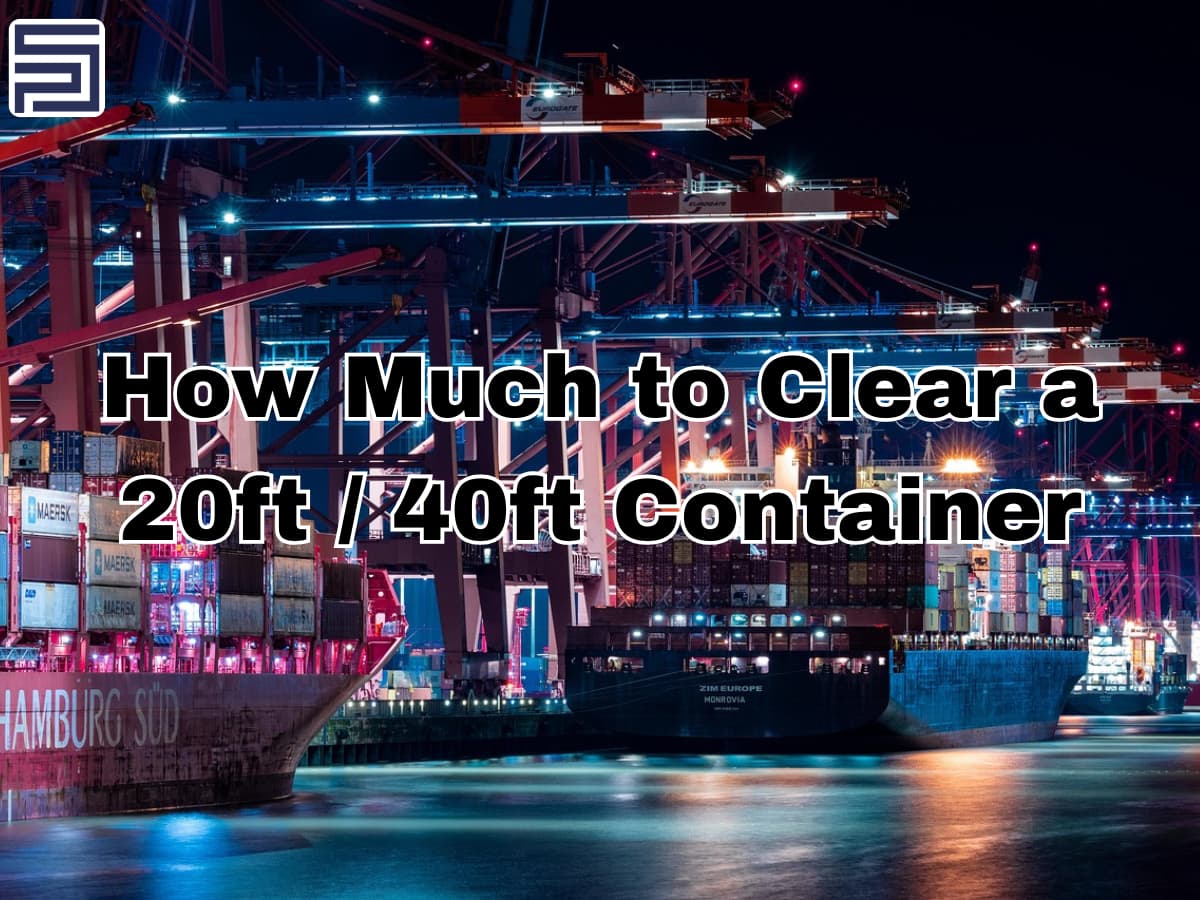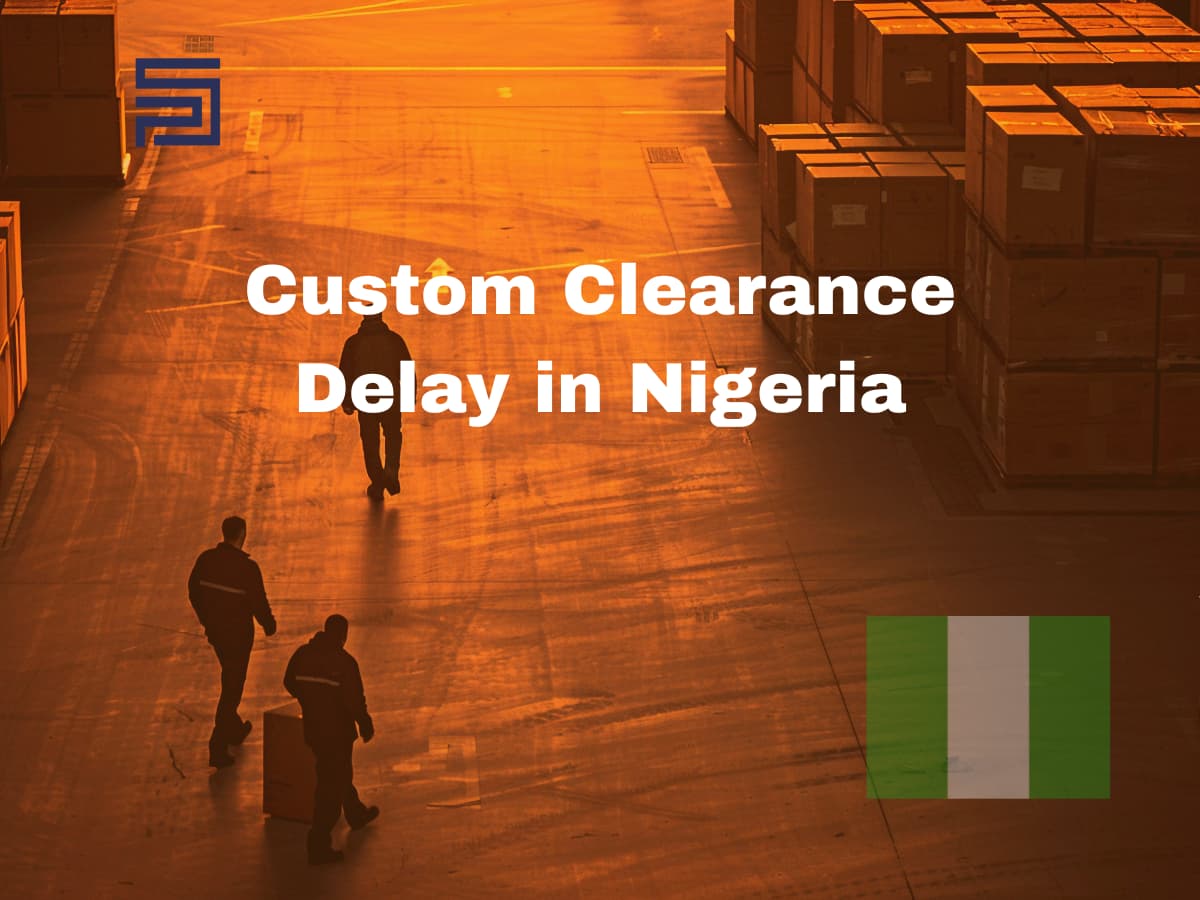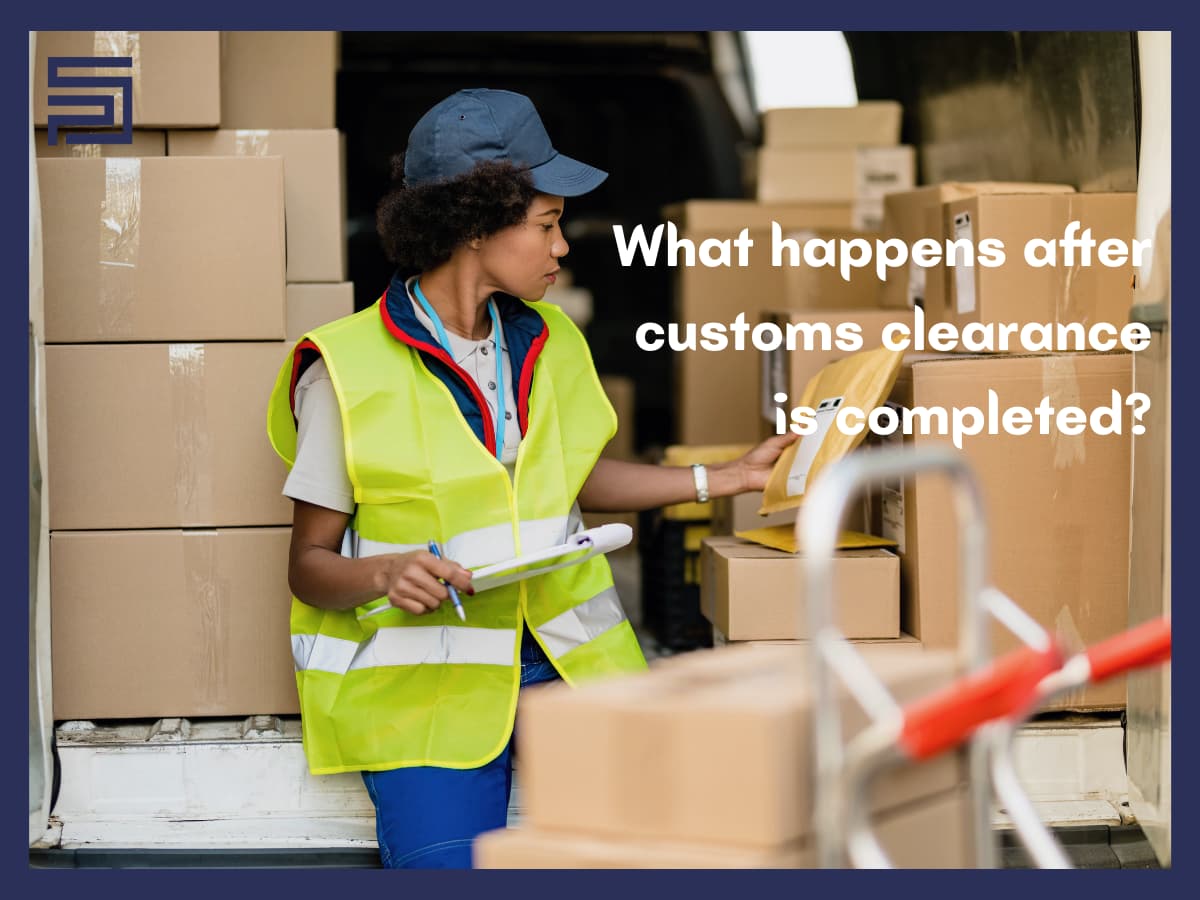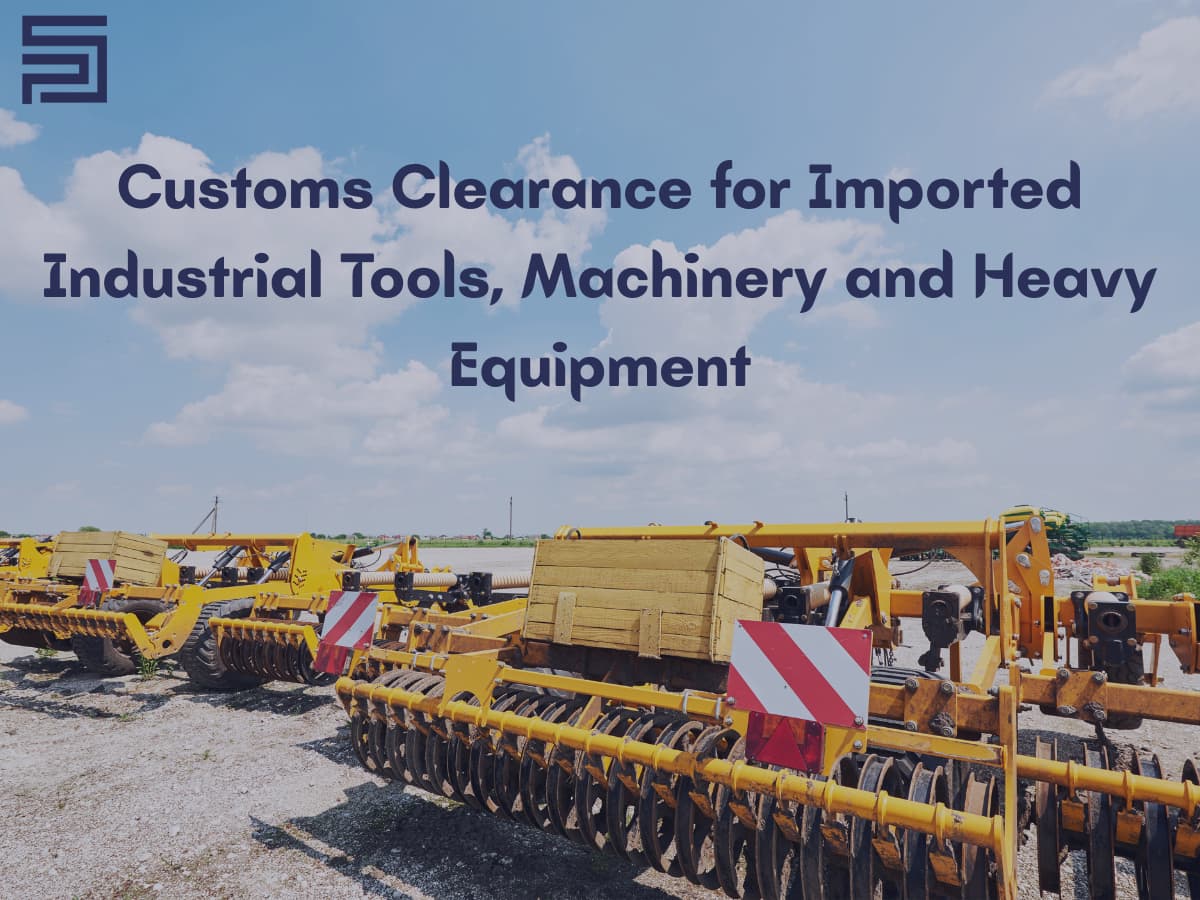Are you planning to export or import a cargo container into Nigeria?
Knowing the customs clearing fee will be helpful.
In this article, we give you a breakdown of everything you need, how much it will cost, and how to save on costs during the customs clearance process.
Do you need an expert Custom Broker to assist you with clearing your container from the port? Contact our team today, and let's get that done as soon as possible.
Quick answer: Typical cost ranges.
Market estimates show that the clearing costs of a container can range from several hundred thousand naira for a 20ft container to several million naira for a 40ft container.
It is important to note that there are large variations in this cost, even up to tens of millions in extreme cases.
For example, as of the time of writing this article, the clearing of cargoes containing general items, i.e. regular clothes and shoes, that our team at SARA ships as a CONSOLIDATED China shipment, cost around 11 million Naira for 20ft container clearance and 14 million Naira for 40ft container clearance.
With this said, I should add that there is no fixed cost for customs clearance; it all depends on the duties for the items in containers, which are determined using the tariff HS code.
What makes up the total cost? (Complete Breakdown)
1. Import Duty (based on HS code & CIF):
Duty is calculated on the shipment’s CIF value (Cost + Insurance + Freight) using the tariff rate for the product’s HS code.
Formula (simple): Import duty = CIF × duty rate (%).
Note: duty rates vary by product in the container.
2. Surcharge/levies (surcharge, VAT, ETLS, other levies):
Beyond duty, you’ll pay additional statutory charges: VAT, any environmental or infrastructure levies, and sector-specific surcharges (e.g., ETLS/SONCAP-related fees where applicable).
VAT is usually applied on the sum of CIF + duty + some levies
3. The Clearing Agent:
A clearing agent (customs broker) handles paperwork, tariff classification, submissions (Form M/PAAR), and liaison with customs and port terminals.
Their fee may be a flat fee or a percentage of CIF and typically covers documentation, filing and follow-up.
4. Terminal & Handling Charges:
These are port operator costs for unloading, container handling, storage on terminal grounds, wharfage and stevedoring. Terminal tariffs are set by the port/terminal operator and vary by port (Apapa vs Tincan, for example).
5. Shipping Company Handling & Deposit:
Shipping lines charge container handling fees, deposit or “container guarantee” and will issue release documents (e.g., gate pass, BOL-related charges). Deposits may be refundable after return; improper return or delay can trigger detention/demurrage charges.
6. Punching, Documentation & Compliance:
This covers costs for mandatory certifications and regulatory checks: Form M and PAAR (import documentation), SONCAP (if applicable), NAFDAC approvals for regulated goods, inspection/verification fees, and document punching/processing at the port. Non-compliance here is a major cause of delays and extra costs.
7. Demurrage & Storage / Transport to Warehouse:
Demurrage = fees for keeping a container at the terminal beyond free time.
Detention = charge for keeping the container outside the terminal.
Storage and inland transport to your warehouse are separate costs, also. These costs can escalate quickly with delays.
How to calculate the clearing cost step-by-step.
Step 1: Get CIF value and HS code:
CIF = Cost of container goods + Insurance + Freight.
This is the declared landed value customs use to calculate duty and many other levies.
The HS code (Harmonised System code) determines the duty rate and any special rules for your product.
Before doing any math, confirm the CIF on the commercial invoice and the exact 6 –10 digit HS code for the item.
If you don’t have your commercial invoice yet but need an early estimate of your product’s import duty, our shipping experts can help.
Simply reach out to us, and we’ll assist you in identifying the correct HS code and calculating an accurate duty estimate.
Step 2: Look up the Duty Rate in CET:
Use the Common External Tariff (CET) or the Nigeria Customs/Single Window to find the duty % for your HS code.
Duty rates vary by product category (some goods are 0%, others attract protective or excise rates).
You can then record the duty rate and note any special remarks (e.g., excise, preferential rates, or exemptions).
We have a complete guide that you can follow to check your customs duty online. Check it out and reach out to us if you need any help.
Step 3: Calculate duty, VAT and other levies:
Compute the statutory taxes in order:
Import Duty = CIF × Duty rate (%)
VAT & other levies = (CIF + Import Duty + applicable levies) × VAT rate (%);
Other levies (e.g., excise, environmental, NCS surcharges) = CIF × specified % (if applicable)
Step 4: Add port & shipping company charges:
Add terminal handling, stevedoring, wharfage, quay charges and the shipping line’s release/administration fees.
Shipping lines may also require a container deposit/guarantee (refundable on timely return).
Step 5: Add agent fee, docs & contingency (demurrage):
Include your clearing agent’s fee (flat or % of CIF), costs for shipping documents like Form M, PAAR, SONCAP, and NAFDAC, inspection fees, and any document punching charges.
Also, add a contingency for demurrage/detention and minor unexpected costs. This covers delays, extra inspections or admin follow-ups.
Final Step: Add safety margin for FX and surprises:
Convert foreign amounts to Naira using a conservative FX rate and add a safety margin (commonly 5–15%, depending on market volatility and exposure).
This prevents shortfalls from exchange swings, last-minute surcharges or penalties.
Customs Clearance Cost for 40ft Container.
Below is a rough estimate of what you would pay:
| Cost (₦) | |
| Container deposit | 400,000 |
| Shipping company charges | 170,000 |
| Terminal charge | 250,000 |
| Punching | 10,000 |
| Custom documentation | 100,000 |
| Agent fees | 5% |
Note: The example above is only a guide to help you understand how to calculate your customs fees. It does not include the cost of your goods; you’ll need to add that yourself and factor in the duty charges for them as well.
If you need the help of an expert in the process, you can contact our team today.
20ft vs 40ft: Which is cheaper to clear, and when to choose which?
When comparing a 20ft and a 40ft container, the cheapest option depends on how full the container will be, the type of cargo (volume vs weight), and several fixed and variable costs discussed earlier in this article.
Using 40ft containers is usually cheaper per unit when you can fill them or come near capacity. Many fixed fees are charged per container, so doubling capacity typically does not double the fixed cost. For bulk, low-value/high-volume goods, this is the most economical option.
But 20ft containers can be cheaper overall for small shipments. If you only need to move a limited quantity and would not fill a 40ft, paying for a 20ft (or shipping LCL) avoids wasted space and the high absolute duty you’d pay on the larger CIF value.
Only choose 40ft if you can reasonably fill (or nearly fill) it and you want the lowest possible per-unit landed cost.
How long does it take to clear a container in Nigeria?
The average time to clear a 20ft or 40ft container in Nigeria typically ranges between 5 – 14 working days, depending on how prepared you are, the type of cargo, and how fast each agency processes your documentation.
In reality, clearance can be very fast or very slow, and the difference often comes down to preparation and compliance.
This is exactly why you need the assistance of a custom broker.
You can check out our complete breakdown on how long a customs clearance process should be.
Common mistakes that increase cost & delays.
Clearing a container smoothly is mostly about avoiding predictable mistakes. Below are the usual culprits that can cost you time or money.
- Wrong or missing HS code.
- Under-declaring the CIF value.
- Missing or late key documents.
- Delayed duty payment.
- Choosing the cheapest/unknown clearing agent.
- Incorrect packaging or overweight/over-dimension loads.
- Not pre-vetting regulated items.
Ensure you work with an experienced customs agent who can help you avoid as many of these mistakes as possible.
Ship and Clear your Containers with SARA
Need help turning that cost estimate into a cleared shipment fast and without surprises? SARA handles end-to-end shipping and customs clearance for importers across Nigeria.
Whether it’s a 20ft or 40ft container, we handle HS code checks, tariff calculations, Form M/PAAR, SONCAP/NAFDAC compliance, port releases, inland haulage, and demurrage management so you can focus on your business.
Contact our team today, and let's get your containers cleared and delivered to you.






Comments
Please log in to leave a comment.